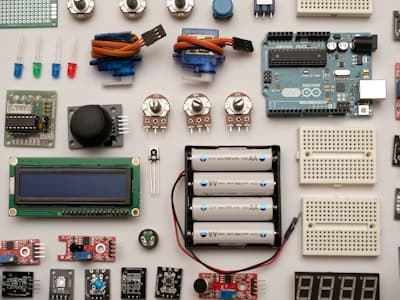Poor indoor air quality affects the health and comfort of building occupants worldwide, yet many contaminants remain invisible and undetected without proper testing. Indoor air sampling provides a scientific approach to identifying and quantifying these hidden threats.
What is Indoor Air Sampling?

Professional laboratory work conducting air sample analysis
Indoor air sampling is a systematic process of collecting and analyzing air samples to detect potential contaminants that may impact human health and building environments. This crucial assessment tool helps identify problems before they become serious health risks.
Types of Indoor Air Contaminants
Volatile Organic Compounds (VOCs)
VOCs are chemical emissions from various sources including:
- Building materials and furnishings
- Paints, solvents, and adhesives
- Cleaning products and air fresheners
- Office equipment and electronics
These compounds can cause immediate symptoms like headaches and eye irritation, as well as long-term health effects.
Biological Pollutants
Biological contaminants pose significant health risks and include:
- Mold spores: Can trigger allergic reactions and respiratory issues
- Bacteria: May cause infections and illness
- Allergens: From dust mites, pet dander, and pollen
- Viral particles: Including airborne pathogens
Particulate Matter and Chemical Vapors
Microscopic particles suspended in air can include:
- Combustion particles from heating systems
- Industrial emissions
- Outdoor pollutants infiltrating indoor spaces
- Chemical vapors from various sources
Indoor Air Sampling Methods and Techniques
Vacuum-Sealed Stainless Steel Canisters
This method involves:
- Collecting comprehensive air samples in sterile containers
- Preserving sample integrity during transport
- Enabling detailed laboratory chemical analysis
- Providing accurate VOC measurements
Passive Samplers
A cost-effective approach that:
- Collects contaminants without active air movement
- Operates over extended periods (days to weeks)
- Requires no power source
- Provides average exposure measurements
Active Air Pumps with Adsorbent Media
This technique:
- Draws air through specialized collection media
- Captures specific types of contaminants
- Allows for precise volume measurements
- Enables targeted pollutant analysis
Biological Sampling Methods
Specialized techniques include:
- Spore trap analysis: Captures airborne mold spores
- Culture-based testing: Grows viable organisms for identification
- Direct microscopic examination: Immediate visual assessment
- DNA-based identification: Advanced molecular techniques
Sample Collection Protocols
Pre-Sampling Inspection
Before collecting samples, professionals conduct:
- Visual assessment of potential contamination sources
- Moisture measurements and detection
- HVAC system evaluation
- Documentation of building conditions
Sampling Location Selection
Strategic placement considers:
- Areas of suspected contamination
- Representative locations throughout the building
- Potential source areas
- Occupant complaint locations
- Comparison with outdoor conditions
Quality Assurance and Documentation
Proper protocols include:
- Detailed record-keeping of sampling conditions
- Consistent sampling techniques across locations
- Chain of custody procedures
- Environmental condition monitoring during sampling
Laboratory Analysis and Testing
Analytical Methods
State-of-the-art techniques include:
- Gas chromatography: Separates and identifies chemical compounds
- Mass spectrometry: Provides molecular identification
- Microscopic examination: Visual identification of particles and organisms
- Specialized chemical detection: Targeted analysis for specific contaminants
Results Interpretation
Professional analysis involves:
- Comparison with established environmental standards
- Identification of specific contaminant types and concentrations
- Assessment of potential health risks
- Recommendations for remediation or mitigation
Health Risk Assessment
Immediate Health Effects
Indoor air contaminants can cause:
- Respiratory irritation and breathing difficulties
- Eye, nose, and throat irritation
- Headaches and fatigue
- Allergic reactions and asthma triggers
Long-term Health Implications
Chronic exposure may lead to:
- Respiratory diseases
- Cardiovascular problems
- Neurological effects
- Increased cancer risk from certain chemicals
Professional Applications
Environmental Consulting
Comprehensive services include:
- Indoor environment assessments
- Risk mitigation strategy development
- Regulatory compliance assistance
- Expert testimony and documentation
Industrial Hygiene
Workplace applications involve:
- Employee exposure monitoring
- Occupational health assessments
- Safety protocol development
- Regulatory compliance verification
Personal Monitoring
Individual assessment includes:
- Personal exposure measurements
- Health risk evaluation
- Targeted monitoring for specific concerns
- Follow-up testing after remediation
When to Consider Indoor Air Sampling
Post-Water Damage Events
Critical situations include:
- Flooding or water intrusion
- Plumbing leaks or HVAC condensation
- Roof leaks or structural water damage
- Suspected mold growth
Health Complaints
Consider testing when occupants experience:
- Unexplained respiratory symptoms
- Persistent allergic reactions
- Chronic fatigue or headaches
- Worsening asthma or breathing difficulties
Building Investigations
Professional assessment for:
- New construction quality verification
- Renovation project evaluation
- Real estate transaction due diligence
- Regulatory compliance verification
Choosing Professional Testing Services
Qualifications to Look For
Select certified professionals with:
- Proper industry certifications
- Experience in indoor air quality assessment
- Advanced analytical capabilities
- Comprehensive reporting abilities
Service Expectations
Quality providers offer:
- Detailed sampling protocols
- Accredited laboratory analysis
- Comprehensive result interpretation
- Clear recommendations and next steps
Conclusion
Indoor air sampling represents a critical tool for protecting occupant health and ensuring safe indoor environments. Through proper sampling techniques, laboratory analysis, and professional interpretation, hidden air quality threats can be identified and addressed before they impact human health.
Whether for residential, commercial, or industrial applications, comprehensive indoor air sampling provides the data needed to make informed decisions about indoor air quality management and occupant protection.
For professional indoor air sampling and analysis services, contact Air Allergen & Mold Testing. Our certified professionals provide comprehensive air quality assessments using advanced sampling techniques and laboratory analysis.
